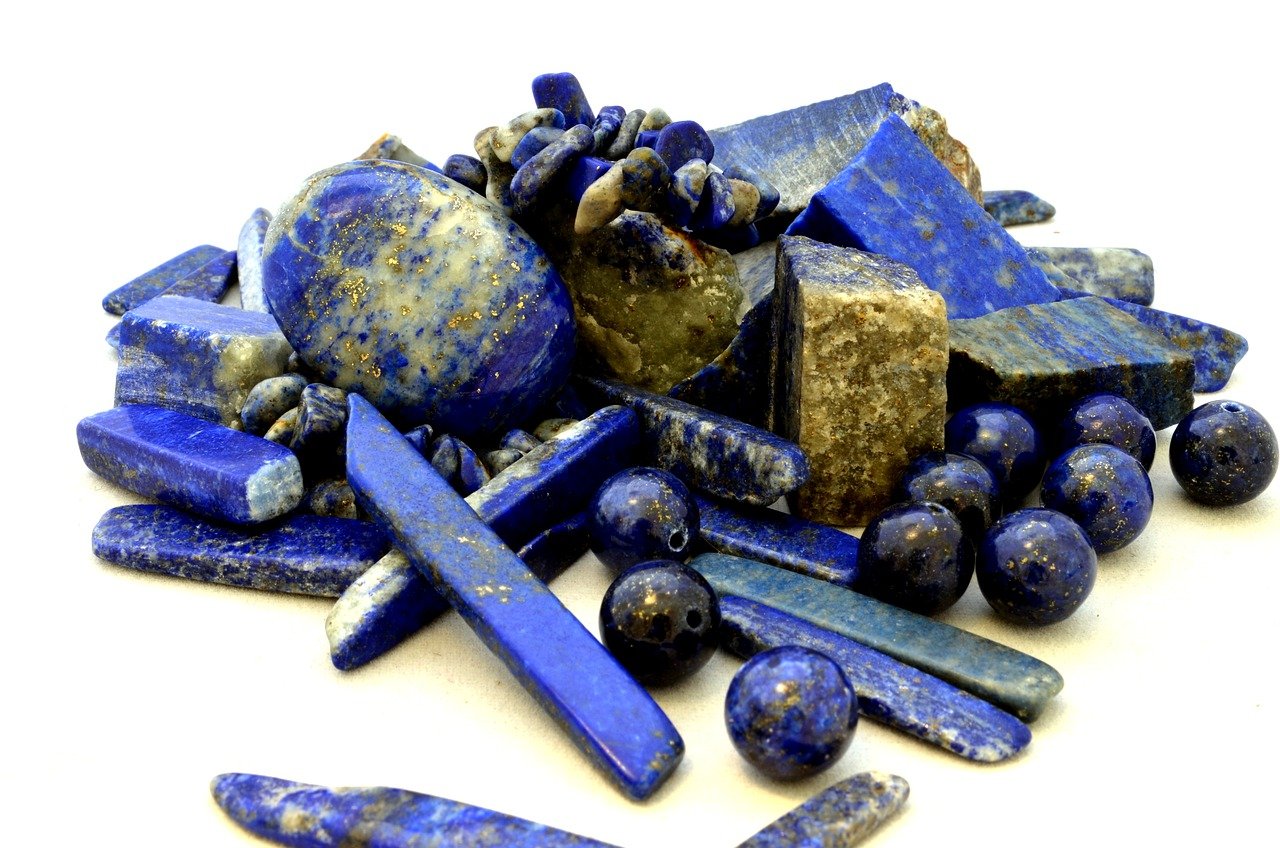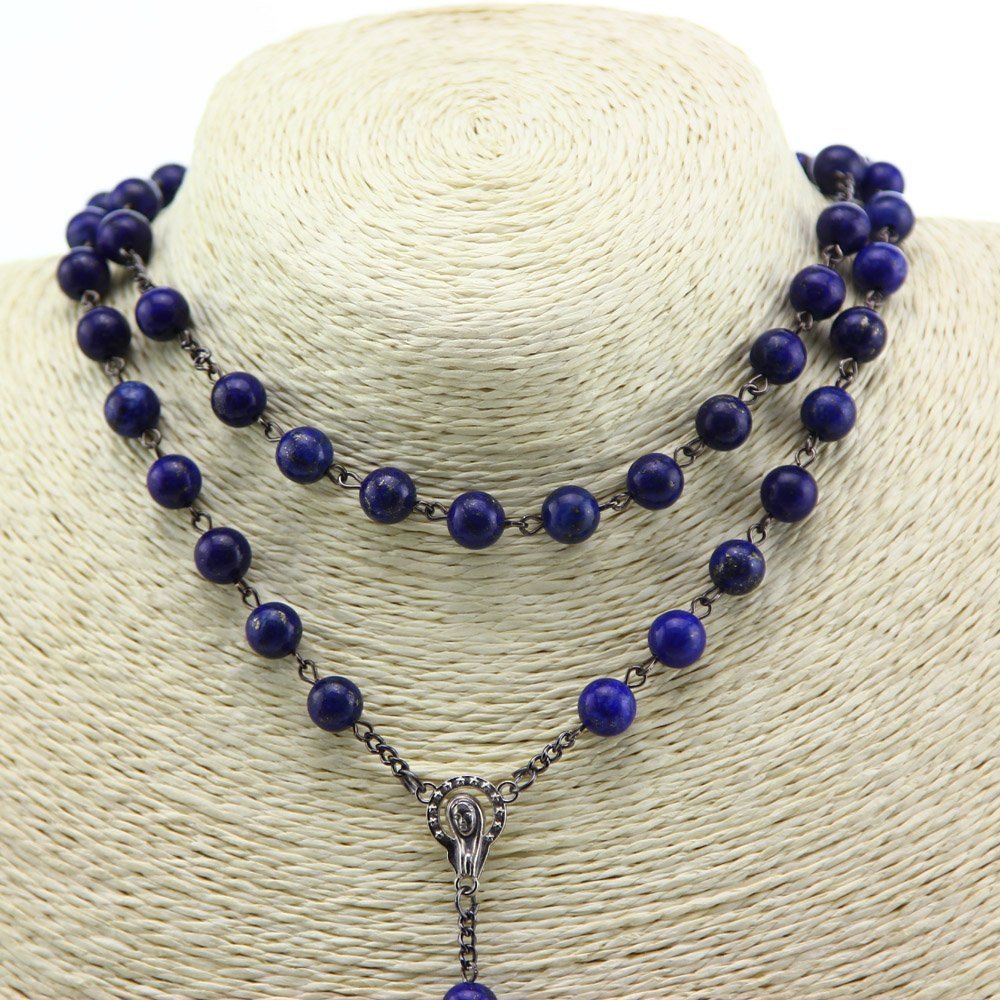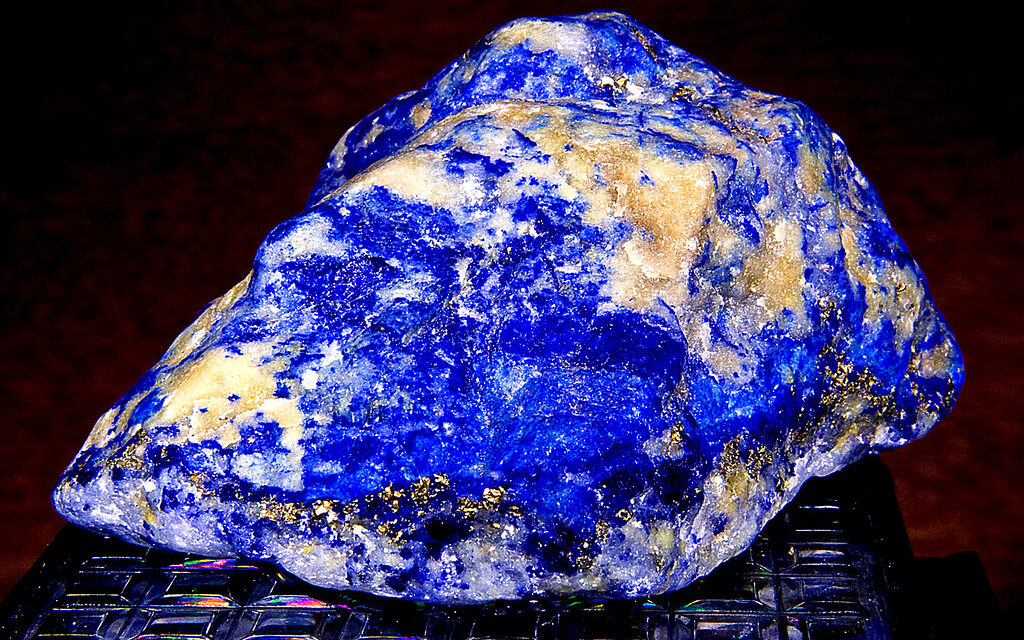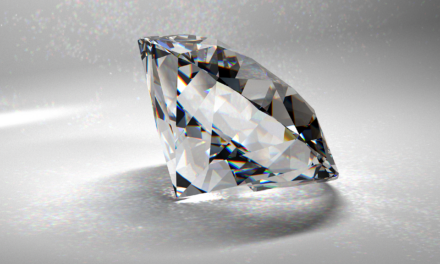Lapis Lazuli is a semi-precious gemstone known for its intense royal blue colour. The characteristic blue colour is even and intense with tiny golden spots. Its name comes from the Latin word “lapis”, meaning stone and the Arabic word “azula”, which means blue. Lapis Lazuli was first mined in Afghanistan, continuing to be the largest producer of this semi-precious gemstone. There are also some other valuable mines, including mines west of Lake Baikal in Russia, Pakistan and mines in the Andes Mountains in Chile. Smaller quantities are mined in Italy, the USA and Canada.
What are some physical properties of Lapis Lazuli?
Lapis Lazuli is an opaque gemstone, polished to a high lustre. It is mainly composed of Lazulite and Pyrite, which creates those beautiful golden flecks. There can also be some inclusions of Calcite, which can discolour the stone and lower its value. A gemstone can be called Lapis Lazuli if it has a specific blue colour and contains at least 25% blue Lazulite. It has number 5 or 6 on the Mohs scale of hardness, which depends on the other minerals present in the gemstone.
Lapis Lazuli is often colour treated before it goes out to the market. Unlike many gemstones, Lapis is porous, meaning it can absorb and hold dyes. Due to this feature, most pieces are treated with blue colour to remove the white calcite inclusions. It is also waxed and polished to improve the lustre. But, there is always a possibility that the colour enhancement will fade over time, making the gemstone look even duller than before.

Healing properties of Lapis Lazuli
Lapis Lazuli is a protection stone that releases stress, depression and fights against psychic attacks. This gemstone encourages harmony, inner self-knowledge and honesty in relationships. It also helps with memory, creativity, intellectual ability and communication skills. It belongs to the best gemstones that help with any relationship problem. It encourages self-expression and helps you speak the truth. Lapis Lazuli helps with overthinking, self-awareness and confidence. It also heals the body by purifying blood, lowering blood pressure and boosting the immune system. It also heals respiratory and nervous health problems and soothes inflammation of the body.
What is the purpose of Lapis Lazuli?
Lapis Lazuli is very soft, which makes it hard to use in rings or bracelets. The gemstone will look scratched and dull after continuous use. Many use Lapis Lazuli in earrings, pendants and pins, where it doesn’t get scratched that easily. For thousands of years, Lapis Lazuli was used in cabochons, carvings, mosaics, statues, spheres and inlays. Its softness is beneficial to many cutters, who can carve it into a talisman and wear it for protection. Some interior items, such as vases or small statues, can also be made out of Lapis.
Lapis Lazuli jewellery
Lapis Lazuli is usually put together with silver. But, many fancy this gemstone in combination with gold, which looks majestic and historical. This historical gemstone looks best when cut into simple shapes – typical cuts are round, oval and cabochon. Cutting Lapis into beads, which vary in size, is common. Jewellers use these beads combined with other smaller gemstones. This combination creates the perfect Lapis Lazuli necklace. Lapis Lazuli suits boho or hippie styles, but they can also look modern and elegant. You can find Lapis Lazuli earrings or pendants wrapped around with metal wire, creating the boho look. But, pairing them with diamonds or other gemstones looks modern and elegant. It’s up to you which style you’ll choose.

What is the price of Lapis Lazuli?
You can find rough Lapis Lazuli at very affordable prices. But, many people fancy the smooth and glossy look, which increases the value. Lapis Lazuli put together with gold or, for example, platinum can be pretty expensive. Let alone when combined with diamonds or other precious gemstones. So, if your budget is low, a variety with silver can be more suitable for you. Also, the origin of the stone can raise its value. The most desirable pieces have a deep blue colour, few streaks of gold and no calcite inclusions – those can cost you a lot of money. The advantage of Lapis is its availability – it is not challenging to find those stunning pieces online.





